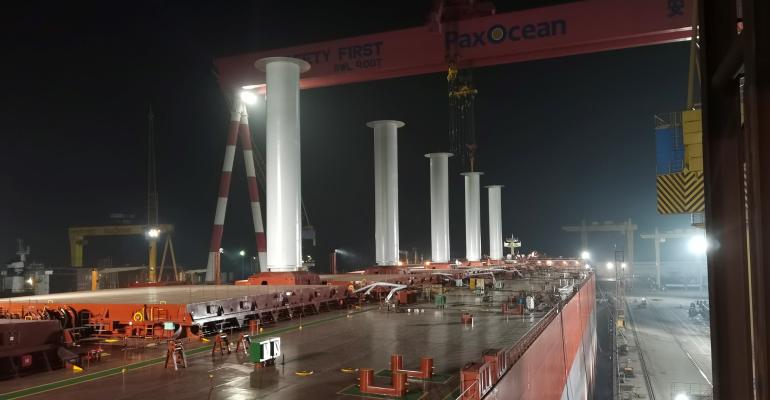Large mutual funds, even those specialising in transportation and energy, have had limited exposure to shipping “names” due to small capitalizations and/or illiquid trading activity.
In a marketplace where intra-day trading, not suitable for mutual funds, has gained in importance, a different instrument holding positions in underlying investments – the ETF has grown in prominence. In August, market analysts Morningstar had pegged the global ETF market’s size at $9.1trn.
In the States, Breakwave Advisors, which, in 2018, had launched the BDRY drybulk freight ETF up nearly 400% since the beginning of the year, has now launched a new instrument- BSEA. Simply put, it is a vehicle for investing in maritime technology tied to carbon reduction, a sector only now emerging on a larger scale. Its promoters call it “The World’s First Green Technology Shipping ETF”.
In a Marine Money Climate Conference presentation by John Kartsonas, the Managing Partner of Breakwave Advisors, he noted that: “Maritime decarbonisation is a critical undertaking in its infancy with the potential to grow significantly and reshape the shipping world as we know it.” Kartsonas added that: “BSEA aims to capitalize on the expected growth in new technologies related to maritime decarbonisation and offshore wind developments.”
The BSEA, which began its trading on the New York Stock Exchange (NYSE) last week, is based on prices of companies providing solutions for the burgeoning market- assembled within the Marine Money Decarbonization Index (MMDI). The MMDI, which is not itself a directly investable instrument, was developed and is maintained by Maritime Transformation Partners, which is, in turn, a collaboration between Marine Money, Breakwave Advisors and Sea/Switch Partners.
Companies in the MMDI range from small capitalization of around $100m up to $50bn behemoths. Interestingly, “stakeholder[s] in a marine decarbonisation demonstration projects recognised by the Global Maritime Forum” are eligible for inclusion in the MMDI (which is rebalanced on a quarterly basis). The BSEA provides the instrument to invest in.
Technology investing is a huge theme. Unlike BDRY, which is a commodity play, in fact, its investments are positions in drybulk forward freight agreements, or FFAs, the BSEA “is a play on technology” in the words of Alex Gordon, Director of ETF Sales at ETFMG, a distributor of ETFs including BDRY and BSEA, who also spoke at the Marine Money Climate event.
BSEA’s sales materials explain that it “tracks the performance of the equity securities of a diversified set of global companies that develop technologies, manufacture equipment or provide services related to marine or ocean decarbonisation. This includes companies involved in cleaner propulsion (including alternative fuels, batteries, and fuel cells), carbon capture technologies and offshore wind development.”
According to information provided by ETFMG, the largest holdings of the BSEA ETF were as follows, as of 25 September 2021 close of business:
Copyright © 2024. All rights reserved. Seatrade, a trading name of Informa Markets (UK) Limited.
Add Seatrade Maritime News to your Google News feed.  |

